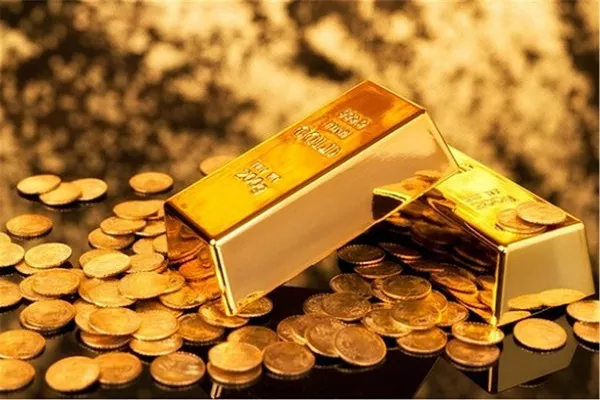Gold, often regarded as a symbol of wealth and prosperity, holds a prominent place in the global financial markets. Investors and traders closely monitor its spot price, which represents the current market value of gold for immediate delivery and settlement. In this article, we delve into the concept of the spot price of gold, its significance, and the various factors that influence it.
I. Understanding the Spot Price of Gold
Definition and Calculation:
The spot price of gold refers to the price at which gold can be bought or sold “on the spot” or immediately. It is typically quoted per troy ounce in major currencies such as USD, EUR, or GBP. The spot price is determined through active trading on global exchanges, with prices continuously updated throughout trading hours.
Physical Delivery and Settlement:
Unlike futures or options contracts, which involve future delivery dates, the spot price reflects the cost of physical gold bullion for immediate settlement. This means that upon transaction completion, the buyer takes ownership of the physical gold, while the seller receives payment.
International Standards:
The spot price of gold is influenced by internationally recognized standards, including the London Bullion Market Association (LBMA) Gold Price and the COMEX/NYMEX futures exchange. These benchmarks provide transparency and uniformity in pricing, contributing to the global acceptance and liquidity of gold.
II. Significance of the Spot Price of Gold
Investment Decision-Making:
The spot price of gold serves as a crucial reference point for investors looking to buy or sell gold. Investors assess the spot price to make informed decisions regarding asset allocation, diversification, and hedging strategies within their portfolios.
Precious Metals Industry:
The spot price of gold significantly impacts the entire precious metals industry. This includes miners, refiners, bullion dealers, jewelry manufacturers, and central banks. Industry participants use the spot price to determine production costs, pricing for finished products, and valuations of gold holdings.
Economic Indicators:
Gold’s spot price is often considered an economic indicator due to its sensitivity to macroeconomic factors. Changes in the spot price can reflect investor sentiment, inflation expectations, currency movements, and overall market volatility. Analysts and economists utilize gold’s price movements to gain insights into broader economic conditions.
III. Factors Influencing the Spot Price of Gold
Supply and Demand Dynamics:
The fundamental forces of supply and demand play a significant role in determining the spot price of gold. Factors such as gold mining output, recycling levels, central bank buying or selling, and investor demand drive the supply and demand dynamics. Any imbalances between these factors can impact the spot price.
Global Economic Conditions:
Macroeconomic indicators, such as GDP growth rates, employment data, interest rates, and inflationary pressures, influence gold’s spot price. During periods of economic uncertainty, investors often flock to gold as a safe-haven asset, driving up demand and prices. Conversely, robust economic growth and stability may suppress the spot price.
Geopolitical and Geoeconomic Factors:
Geopolitical tensions, trade disputes, wars, and geopolitical uncertainties can significantly impact the spot price of gold. Gold is often seen as a hedge against political and economic instability, leading to increased demand during times of crises.
Central Bank Policies:
Actions taken by central banks and monetary authorities can affect the spot price of gold. Changes in interest rates, quantitative easing programs, and adjustments to currency reserve allocations can influence investor sentiment and demand for gold.
Currency Movements:
Gold is globally traded in various currencies, with the US dollar being the most influential. Currency fluctuations can impact the spot price of gold. A weakening currency relative to gold can make it more expensive for buyers, driving up demand and prices.
Market Speculation and Sentiment:
Sentiment-driven factors, including market speculation, investor sentiment, and technical analysis, can cause short-term fluctuations in the spot price of gold. These factors often reflect traders’ expectations, market perceptions, and speculative trading activity.
What time is best to sell gold?
Determining the best time to sell gold can be challenging as it depends on several factors, including market conditions, your personal financial goals, and individual circumstances. Here are a few considerations that can help you make an informed decision:
Market Analysis:
Monitor economic indicators, geopolitical events, and market trends affecting the price of gold. Factors such as inflation, interest rates, currency fluctuations, and global political stability can influence gold prices.
Financial Goals:
Assess your own financial objectives. If you have achieved your desired profit margin or if you need liquidity for other investments or expenses, it might be a suitable time to sell.
Diversification:
Evaluate your investment portfolio and consider the role of gold within it. If your gold holdings have become too large a portion of your overall portfolio or if you prefer to diversify into other assets, it may be a good time to sell.
Professional Advice:
Consult with a trusted financial advisor who specializes in precious metals or commodities trading. They can provide personalized guidance based on your specific financial situation and market expertise.
Remember that predicting short-term price movements is challenging, and attempting to time the market perfectly can be risky. It’s often recommended to take a long-term perspective and make decisions based on your overall investment strategy rather than trying to time short-term price fluctuations.
Conclusion
The spot price of gold serves as a vital indicator in the global financial markets, shaping investment decisions, influencing economic analyses, and impacting industry players. It represents the current market value of physical gold for immediate delivery and settlement. Understanding the significance of the spot price and the influencing factors enables investors, traders, and industry participants to navigate the complex dynamics surrounding gold.
Supply and demand dynamics, global economic conditions, geopolitical factors, central bank policies, currency movements, and market speculation collectively shape the spot price of gold.


